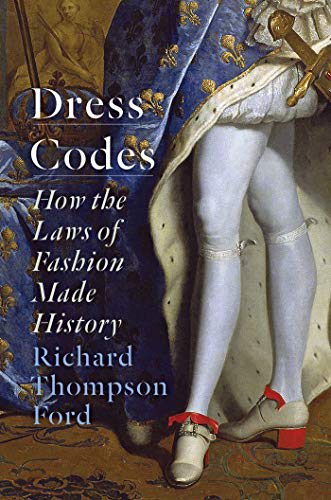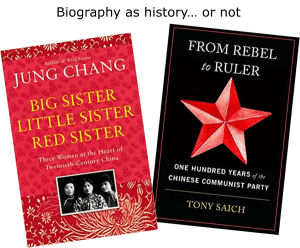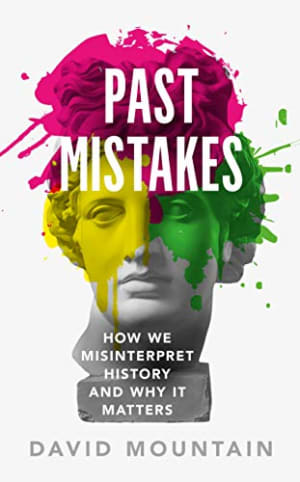Is fashion frivolous? Dress Codes: How the Laws of Fashion Made History acknowledges that it can judged to be, but also shows that it is and has been a serious matter. Whether we want them to or not, our clothes project an image of us to the world, and how that image has been controlled and read in the past still has an influence on us today, and this book gives as an insight into how.
Richard Thompson Ford, the author of Dress Codes, loves suits. Really loves them. And to some extent, he has written a book explaining how all fashion up to the present day leads to suits as the ultimate in menswear. He traces clothing from the “birth of fashion” in the 1300s when men “stopped wearing draped garments and began wearing tailored clothing” to the present day, when he identifies a return from the aberration of athleisure back onto the path of suits. “Young people are,” he claims, “for the first time in half a century, discovering the refined pleasures of tailored clothing … in short, they are experiencing the pleasure of dressing like adults.”
Fashion snapshots through time
Along the way he provides us with a number of historical fashion-related snapshots. He outlines how clothing has been legally restricted to reflect and shore up status; restrictions on voluminous trousers in the Elizabethan era in England, restrictions on red cloaks in Castile in the 13th century, veil mandates, veil bans. Economic prosperity had led to holders of new money being able to dress like aristocrats: clearly unacceptable. Everyone in Britain is probably familiar with pictures of Henry VIII’s elaborate clothing; it is less well-known that under his reign clothing was restricted according to rank for all strata of society from a ban on serving men using over two-and-a-half yards of cloth for a short gown or three for a long one, to a ban on men under the rank of knight wearing velvet, silk or damask. Cloth of gold and silver was restricted to lords and above. These rules were made yet more complicated and restrictive in Elizabeth I’s reign.
Thompson Ford connects the development from the wearing of draped garments, such as togas, to wearing tailored garments, with an increase in individuality and the ability to show individuality, with the caveat that “Perhaps true individuality in dress is almost never seen. But the ideal of individuality is everywhere, even if it is expressed in the same way by many different people.” He traces the idea of individuality as appearing alongside the emergence of fashion in the late Middle Ages and the Renaissance in the West.
Dressing up and social status
He looks at dress codes and concedes that some may be discriminatory, but finds that the absence of written dress codes creates its own problems as they tend to be replaced by unwritten dress codes so entrenched within certain groups that they can almost only be understood by those who already understand them. He argues that even without sumptuary laws, dress indicates status, with those of high status dressing in a way which shows this. While Henry VIII restricted certain types of fabrics, in later eras the upper echelons developed a custom of having different clothing for different activities and times of day, making it unaffordable and impractical for the lower classes to emulate the ton.
The civil rights movement and respectable appearance
A fascinating section on restrictions on and expectations of fashions for Black people in the US looks at the importance of “respectable appearance” in the civil rights movement as a sign of the activists’ seriousness and importance, and the tensions between the proponents of respectable dress and younger protestors in the 1960s who opted for denim clothing as they aimed to emphasise their alliance with rural labourers. In general though, as a UK reader, the sections on the contemporary and recent US are more difficult to truly understand than the sections on European history; this may prove Thompson Ford’s point that the nuances of dress codes (and the even more nebulous idea of good taste) are obscure to outsiders and very easy to get wrong unless you are steeped in that particular culture.
Women and modesty
Women’s fashion, according to Thompson Ford, followed a different trajectory to men’s. While men’s clothing was increasingly tailored, women’s remained draped for much longer, particularly over the lower body. While men wore padding during the neo-classical era to try to appear as if their bodies were similar to Greek statues, women wore classical Greek style dresses, updated for the era’s modesty requirements. When men withdrew from bling in the “Great Masculine Renunciation” many of them continued to show off their status by transferring that bling to their wives, mistresses and daughters. Thompson Ford is excellent on the difficulties faced by women in trying to dress themselves appropriately for traditionally male roles and careers. On the subject of suitable attire for lawyers, he comments that “women lawyers have greater freedom in their choice of attire than men… But as a consequence, women are relentlessly judged on their choices.”
Although the book does cover women’s clothing, from nuns to flappers to high school students sent home for showing their collar bones, it often looks at women’s fashion as it relates to men. Thompson Ford is particularly interested in tailoring and where he goes into real detail about clothing it is usually men’s. The sections about women’s clothing tend to focus on social issues and the difficulties professional women face in walking a line in which they are expected to be attractive, but not too attractive, to men.
Clothing past and the present
I found the sections on historical fashion and clothing legislation particularly interesting; although strict laws on clothing seem odd to us in the West today, previous legislation and attitudes have clearly shaped the way we see fashion now. The more contemporary sections of the book trod more familiar ground resulting in fewer “wow!” moments.
Conclusion
How Dress Codes will naturally appeal to people who already have an interest in fashion but also contains lots that will be of interest to people who believe themselves to be above all that. A great read for anyone interested in fashion, tailoring – or simply social history.
Book details
(back to top)- Title -
Dress Codes : How the Laws of Fashion Made History
- Author -
Richard Thompson Ford
- Publication date -
February 2021
- Publisher -
Simon and Schuster
- Pages -
464
- ISBN 13 -
978-1501180064
- Podcast episode -
Stanford Radio: What How We Dress Matters and Why with guest Richard Thompson Ford
- Podcast episode -
The World in Time / Lapham’s Quarterly: Episode 69 Richard Thompson Ford
- Amazon UK -
- Amazon US -



